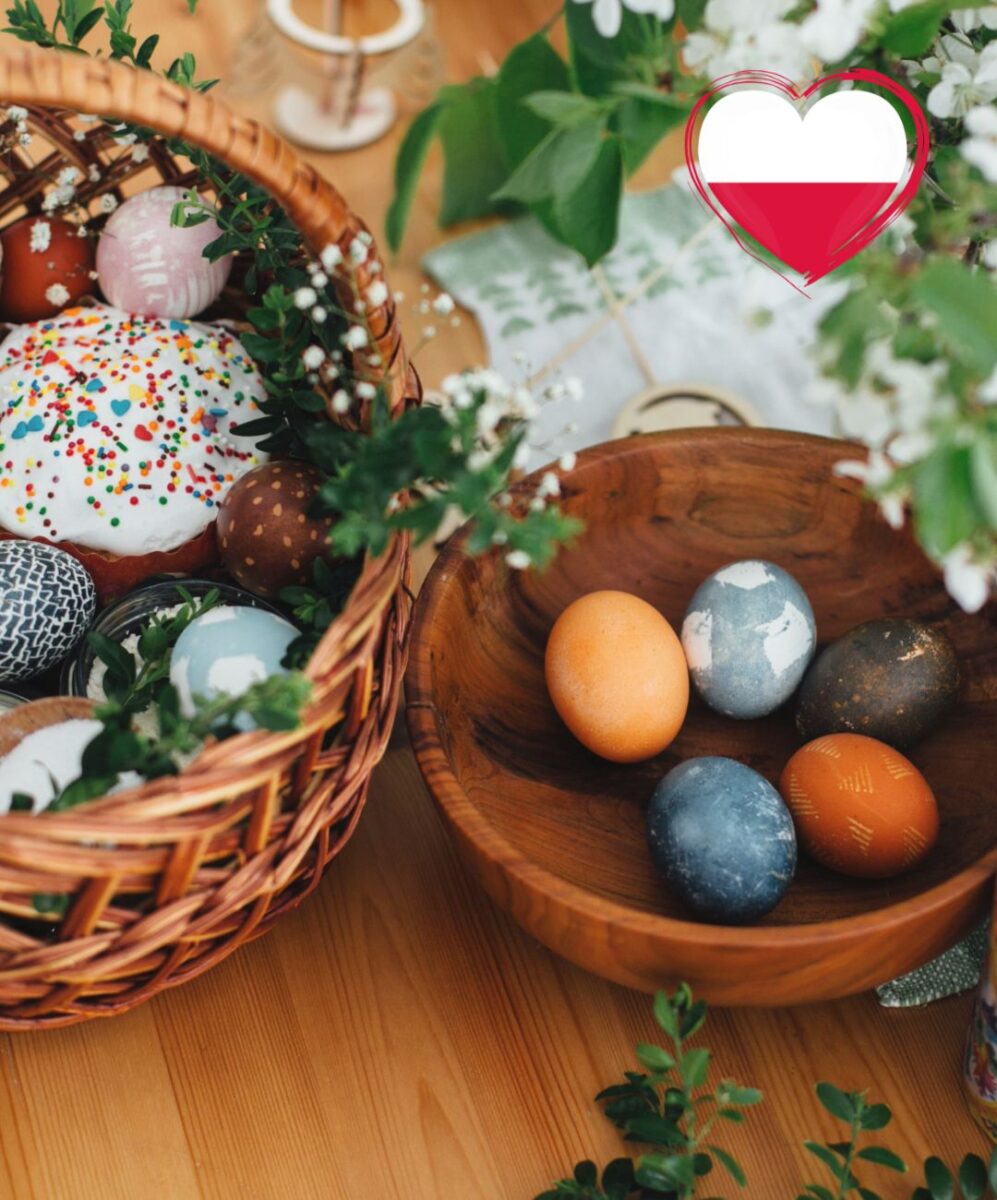
Easter traditions in Poland – How to celebrate Easter in the traditional Polish way. Easter is a major holiday in Poland, and comes just after Christmas in importance for tradition. Easter festivities have been celebrated in Poland since the Middle Ages, when it became a Christian country and Polish people, young and old, still delight in following the plentiful rich and colorful Easter traditions, which are cultivated with family and friends over an entire week. Here is a brief overview on how to celebrate Eater in the traditional Polish way (you might also want to take a look at other Polish traditions here: Life in Poland)
Polish Easter Traditions
Easter traditions in Poland has changed over the years, but many traditions have survived the changing times. Typical Easter traditions in Poland include Palm Sunday with Easter palms, Polish Easter basket (święconka) with Easter eggs (pisanki), Easter Sunday Mass with Resurrection (rezurekcja) procession, Easter breakfast (śniadanie wielkanocne) and of course Easter Monday called śmigus-dyngus.
Easter palms (palmy wielkanocne)
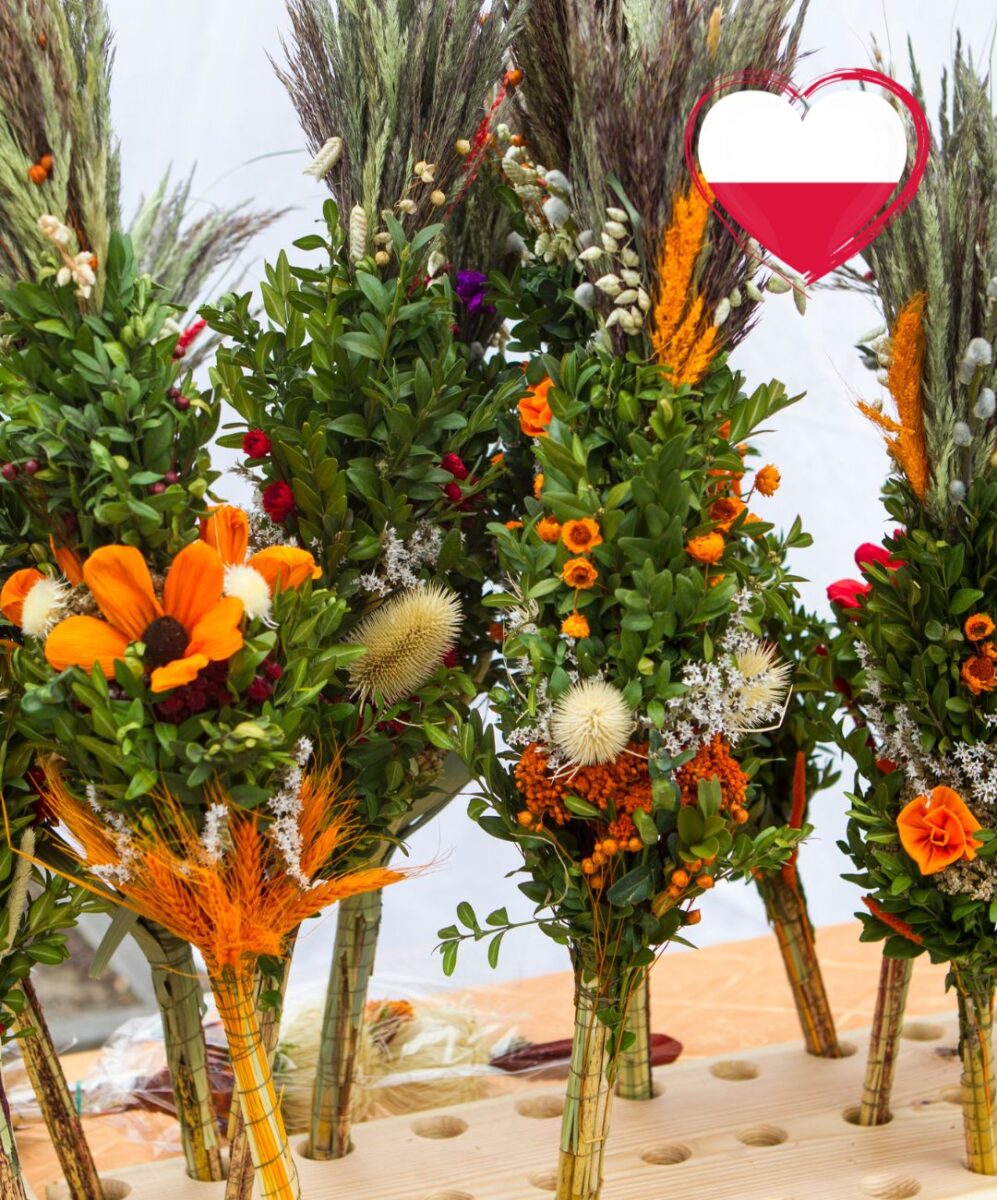
Polish Easter palms (palmy wielkanocne) most often resemble vertical, slender bouquets of flowers. According to tradition, the Easter bouquet should include willow twigs and evergreen plants such as boxwood, blueberry, or cis. The bouquet is then decorated with colored ribbons and dried, artificial or paper flowers. The use of willow branches is meant to symbolize rebirth of life, and resurrection. Evergreen plants also symbolize the immortality of the soul. Colorful accents are meant to emphasize the joy of the resurrection of Jesus Christ, as well as the arrival of Spring or the rebirth of nature. The Easter Palm is an important element accompanying the celebration of Easter traditions in Poland. Every year the assortment of ready-made palms is very varied, but many families choose to make them themselves as such self-made palms are a great way to spend creative free time with family.
Polish Easter eggs (pisanki and kraszanki)
In Poland, the custom of preparing colorful eggs called pisanki and kraszanki for Easter is very well known and widely cultivated in almost every household. This tradition dates to pre-Christian times and becomes a permanent part of Christian rituals only in the Middle Ages. Pisanki are colorful eggs, usually chicken ones, decorated with various patterns and inscriptions. Kraszanki are eggs usually painted in one color without decorative patterns or inscriptions.
Czytaj również: How to make traditional Polish Easter eggs
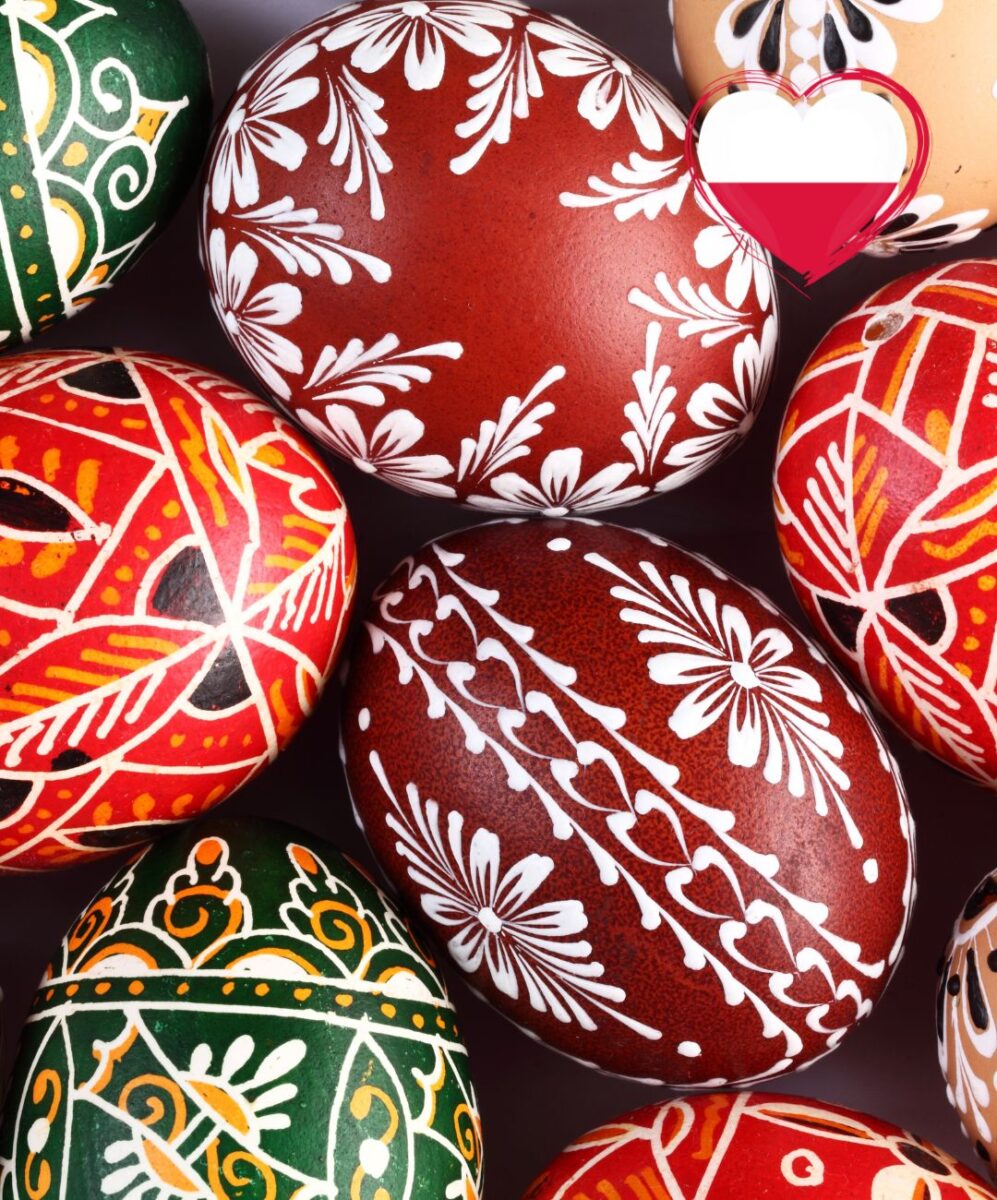
Easter basket (święconka)
In every Polish family, food is prepared to be blessed in the morning hours of Holy Saturday. It is the symbol of “living bread that came down from heaven” and in Holy Communion gives life to the world. There are also eggs and colorful pisanki or kraszanki – a symbol of life that brings joy to the hearts, as well as ham and an Easter lamb made from e.g. butter or dough. Its purpose is to symbolize Jesus himself. Poles also add horseradish, pepper, and salt to the Easter basket, which are the equivalent of biblical bitter herbs. Easter baskets are decorated with evergreen blueberries or boxwood. They can also be spring flowers or catkins. The blessed foods are later eaten during the Easter breakfast called Śniadanie wielkanocne.
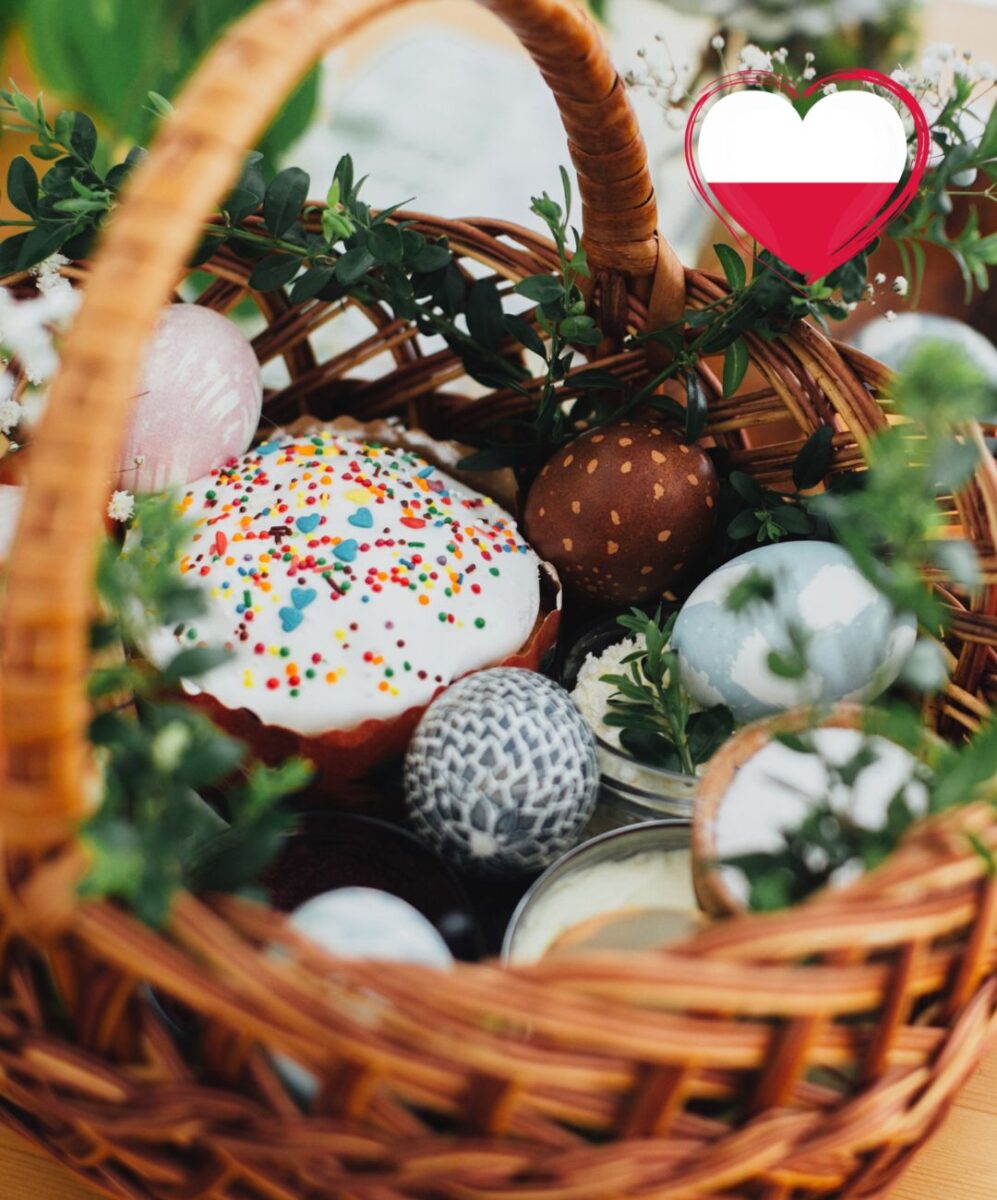
Easter Sunday Mass with Resurrection (Rezurekcja) procession
Polish people pay special attention to the celebration of Easter for reasons of faith. A lot of them attend a liturgy called “Rezurekcja”. It is not a Holy Mass. After the Easter Vigil, when the resurrection rites at the tomb of the Lord have been completed, the celebrating priest along with the other participants of the liturgy, carrying the Blessed Sacrament, sets out in a joyful procession around the church, singing “Wesoły nam dziś dzień nastał, którego każdy z nas żądał, Tego dnia Chrystus zmartwychwstał! Alleluja!” This procession goes around the church as many as three times. At the head of the procession, the liturgical service carries a cross with a red stool hanging on its shoulders, there is also a figure of the Risen Christ, and a special candle called the Paschal.
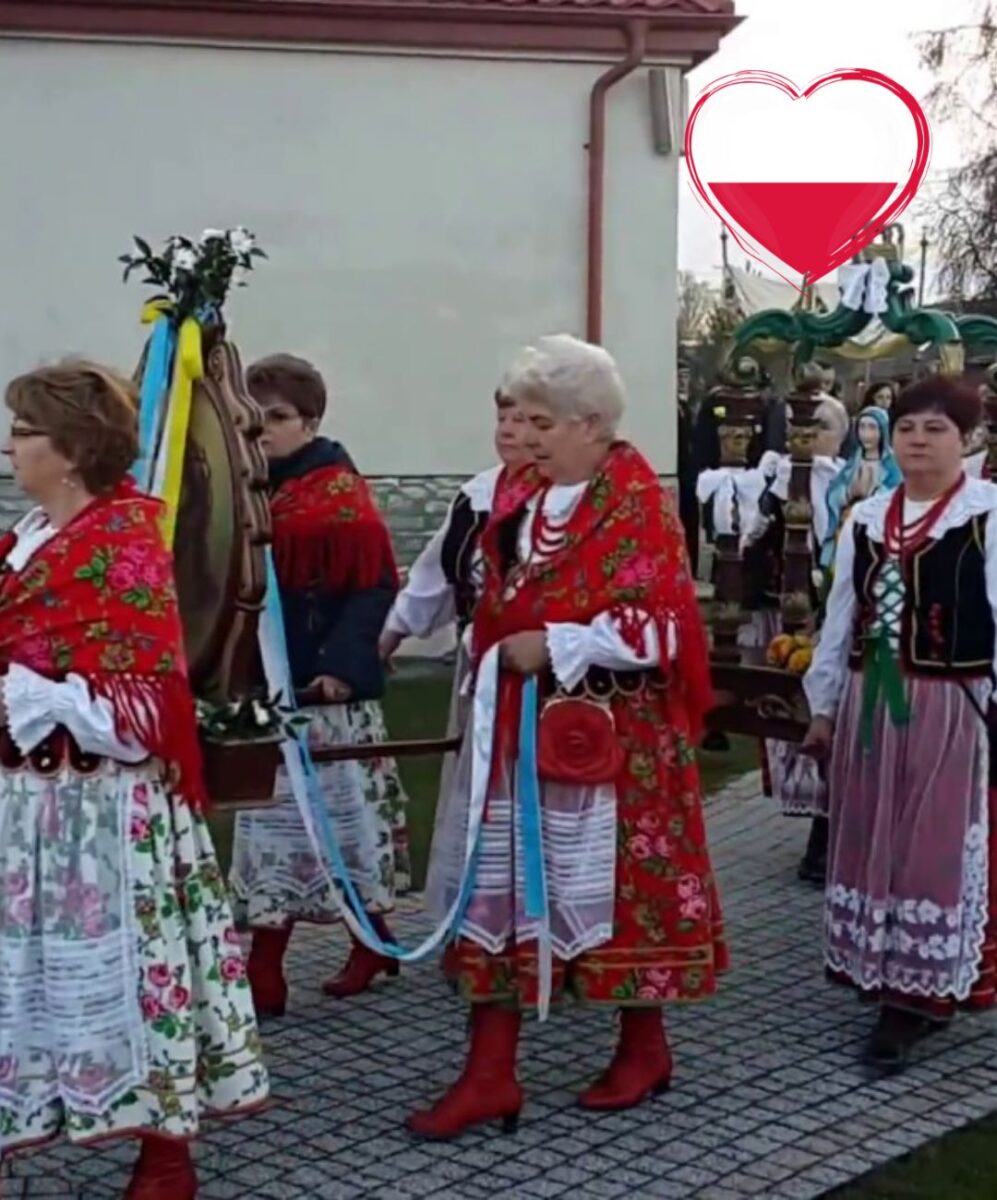
Easter breakfast (Śniadanie wielkanocne)
The Polish Easter breakfast is a joyful meal rich in a variety of egg and meat dishes. Each dish is symbolic. At the end of the meal, many Polish houses serve sweet cakes, richly decorated mazurek and fluffy yeast cakes. All this is accompanied by conversations, various games, remembering family members who have already passed away or simply spending a nice time with family, which many people, especially those who work only get to do during the holiday season.
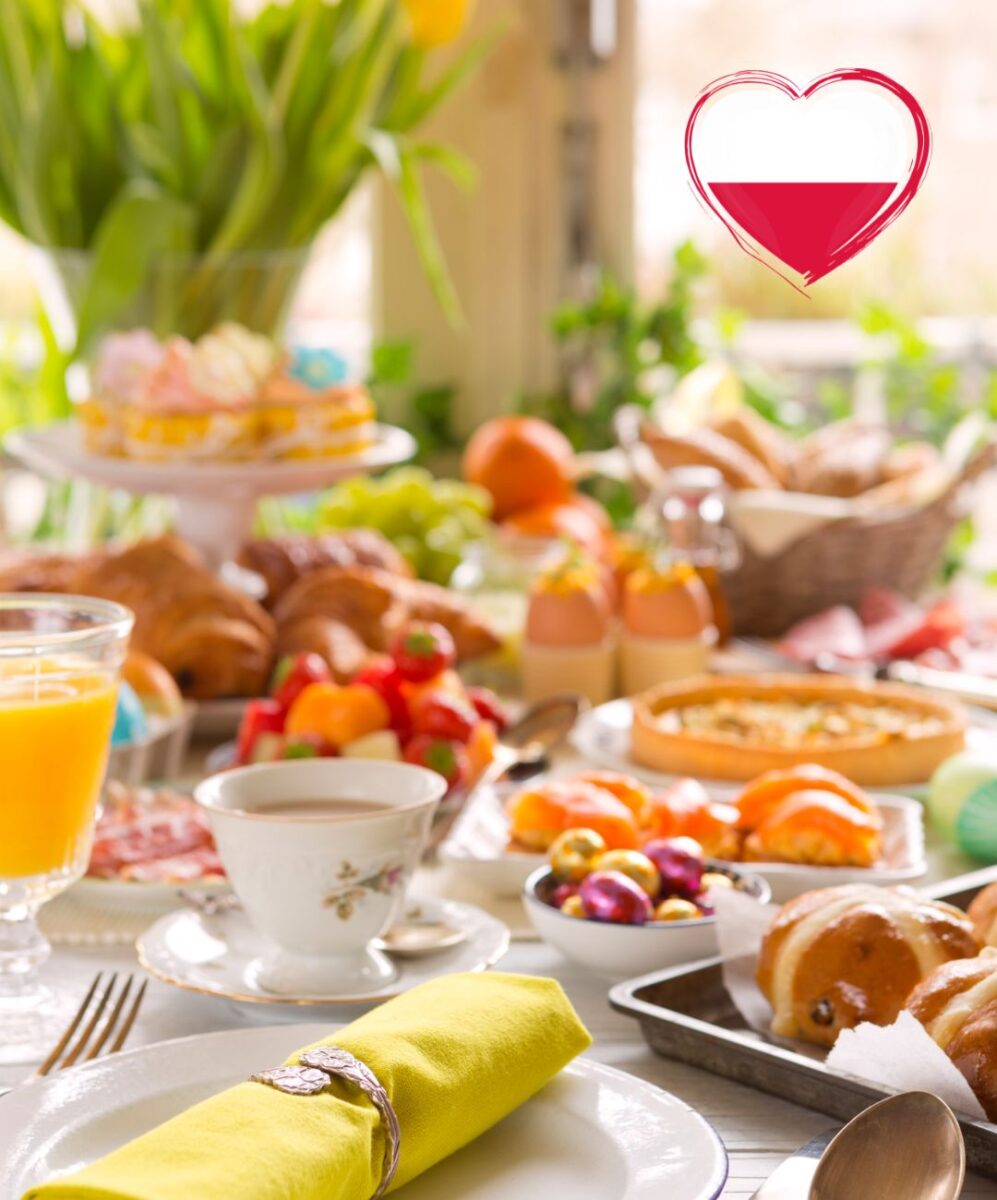
How Poles celebrate Easter Monday? (śmigus-dyngus)
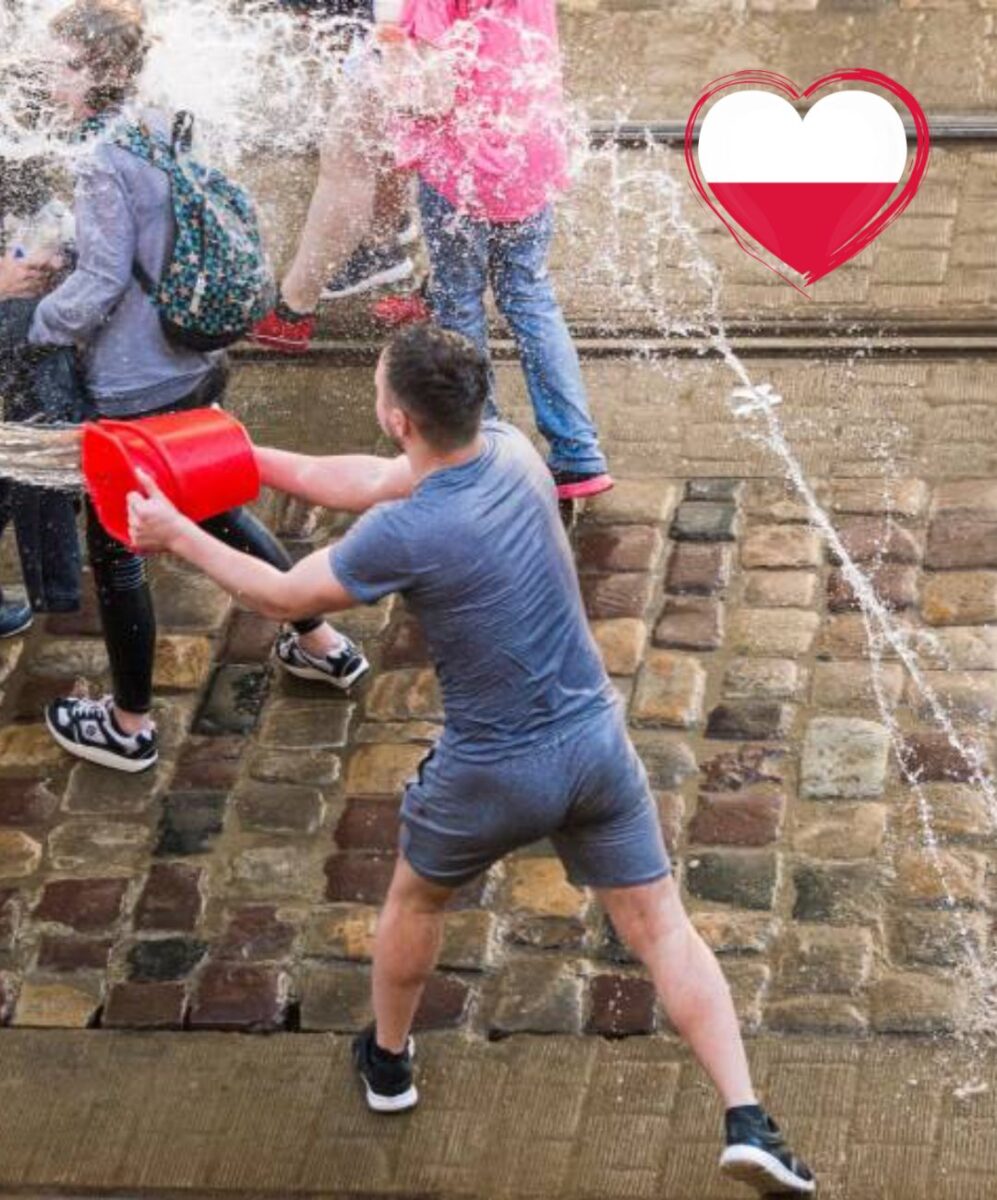
In Poland, Easter Monday is known as śmigus-dyngus – pouring water on each other, often icy, straight from a well or tap. There are different explanations for the genesis and meaning of this folk custom. For many Christians, this is a sign that we have all been washed with the water of Holy Baptism, and we should never forget it. In the afternoon, many Poles spend time e.g. walking in the open air or visiting family members to share the wonderful news about the Resurrection of Jesus. In some regions of Poland, children prepare Easter greeting cards for distant relatives, which they hand out in person during visits with their parents.
How to celebrate Easter in the traditional Polish way
This is a brief introduction to how to celebrate Easter, one of the most beloved holidays in Poland, in the traditional Polish way. Do you have your Polish family traditions too? Take pride in your heritage and share the joy for Resurrection! Take a look at other Polish traditions here: Life in Poland
Sources: Polski Obserwator – Culture.pl
